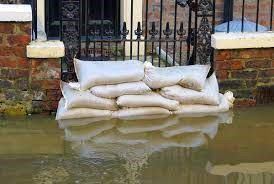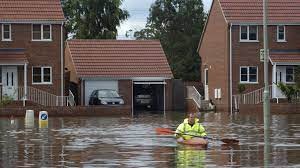
One of the biggest worries for homeowners everywhere, especially as climate change starts to increase is flooding. In recent years, we have seen many serious flooding issues all around the UK, and this is something that we are only likely to see more of in the future.

Some homes are more at risk than others, due to their location, but there are ways that you can protect your home from flooding, or at least minimise the impact that it has on you and your home.
Flooding can be caused by many things, from torrential rain, melting snow and ice, bad weather on the coast (if you live near the sea), and too much building in certain areas, making the homes vulnerable to flooding. One of the most sensible things to do is to keep a close eye on the local weather – look out for any flood warnings that are being given out, either by the Met Office or the Environment Agency, as this will give you some time to prepare.
Having a good supply of sandbags is one of the best things that you can do to ensure that you are prepared for a flood. That way, when the weather warning comes, you can ensure that you have them ready around your home to reduce the damage that may be caused by the flooding.

Something else to pay attention to is the health of the drains around your home. Flood water can enter a drain and cause flooding, especially if the drain is already damaged. If you want to ensure that your drains are all in good order, it is best to get a professional, like this drain lining company https://www.wilkinson-env.co.uk/news/drain-lining-no-dig-repair/ to come and check them for you, and if necessary make any repairs that are required.
Something else that may help to protect against flooding is your garden. There are ways that you can landscape your garden that can help to move water away from your home, and this is something that is certainly worth looking into if you live in an area that is prone to flooding and often has flood warnings.
Electrical sockets are something else that can be damaged if floodwater does get into your home – if you have these moved higher up the wall this will reduce the danger of the water and electricity mixing in the event of a flood.


